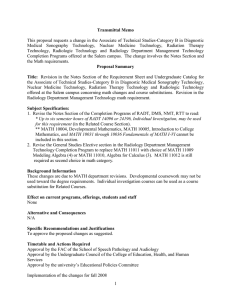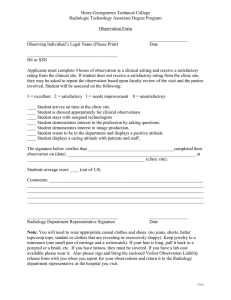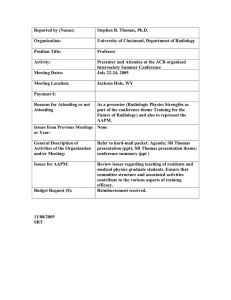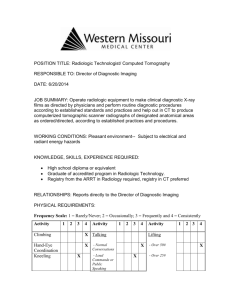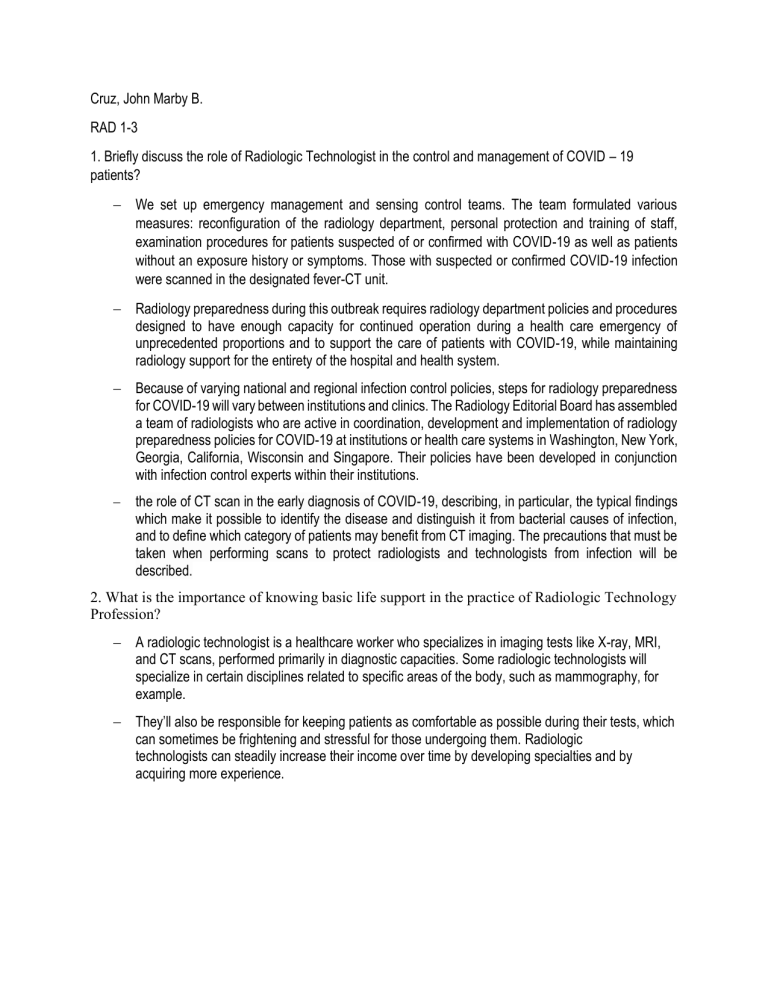
Cruz, John Marby B. RAD 1-3 1. Briefly discuss the role of Radiologic Technologist in the control and management of COVID – 19 patients? We set up emergency management and sensing control teams. The team formulated various measures: reconfiguration of the radiology department, personal protection and training of staff, examination procedures for patients suspected of or confirmed with COVID-19 as well as patients without an exposure history or symptoms. Those with suspected or confirmed COVID-19 infection were scanned in the designated fever-CT unit. Radiology preparedness during this outbreak requires radiology department policies and procedures designed to have enough capacity for continued operation during a health care emergency of unprecedented proportions and to support the care of patients with COVID-19, while maintaining radiology support for the entirety of the hospital and health system. Because of varying national and regional infection control policies, steps for radiology preparedness for COVID-19 will vary between institutions and clinics. The Radiology Editorial Board has assembled a team of radiologists who are active in coordination, development and implementation of radiology preparedness policies for COVID-19 at institutions or health care systems in Washington, New York, Georgia, California, Wisconsin and Singapore. Their policies have been developed in conjunction with infection control experts within their institutions. the role of CT scan in the early diagnosis of COVID-19, describing, in particular, the typical findings which make it possible to identify the disease and distinguish it from bacterial causes of infection, and to define which category of patients may benefit from CT imaging. The precautions that must be taken when performing scans to protect radiologists and technologists from infection will be described. 2. What is the importance of knowing basic life support in the practice of Radiologic Technology Profession? A radiologic technologist is a healthcare worker who specializes in imaging tests like X-ray, MRI, and CT scans, performed primarily in diagnostic capacities. Some radiologic technologists will specialize in certain disciplines related to specific areas of the body, such as mammography, for example. They’ll also be responsible for keeping patients as comfortable as possible during their tests, which can sometimes be frightening and stressful for those undergoing them. Radiologic technologists can steadily increase their income over time by developing specialties and by acquiring more experience. REFERENCES: https://link.springer.com/article/10.1007/s00330-020-06865-y https://www.sciencedaily.com/releases/2020/03/200316145328.htm https://www.jacr.org/article/S1546-1440(20)30285-4/pdf https://pubs.rsna.org/doi/10.1148/radiol.2020200988 https://www.thebalancecareers.com/radiologic-technologist-skills-list-2062464
